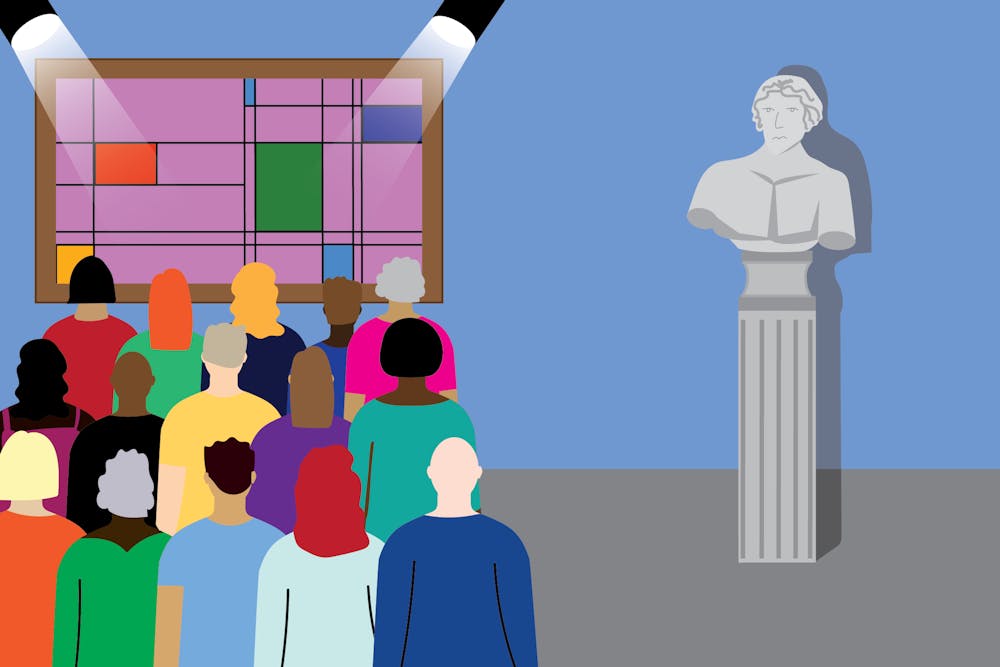In the battle over culture, the arts have always been the right's most elusive frontier. Conservative pundits have often framed the contemporary art world as a vessel for left-wing ideology rather than creative expression. President Donald Trump has inserted himself directly into the leadership of the Kennedy Center — the national cultural institution for American theater, dance, music and the arts — appointing himself chairman and openly criticizing what he called "woke" programming, saying, "We didn’t like what they were showing."
He has pledged to steer the institution in a new direction, expressing dissatisfaction with its previous artistic offerings. Similarly, the Smithsonian Museum faces political pressure under the same administration. President Trump issued an executive order directing Vice President J.D. Vance, a member of the Smithsonian Board of Regents, to remove "improper ideology" from the institution's exhibits. These moves reflect a broader effort to reshape cultural institutions to mirror a narrow, ideologically sanitized vision of artistic expression.
In its essence, conservatism is the politics of preservation — a reverence for tradition, order and the familiar. Art by contrast is a vehicle to break it. The arts are stewards of the avant-garde, a field where revolutionary ideas are pushed to the forefront. The best literature, music, theatre and film don’t conform to power — they challenge it. Creativity demands the ability to imagine beyond inherited boundaries.
And it is precisely those inherited boundaries, the social and aesthetic guardrails, that conservatism aims to defend, inhibiting it from producing truly great art.
This reactionary impulse isn’t just a contemporary quirk, it has fueled conservatism through history. Conservatives have historically treated modern art as dangerous and destabilizing. In the interwar period artistry exploded with experimentation that challenged tradition: Dadaism, absurdism, jazz, surrealism, each pushing against the confines and conventions of their respective fields. The conservative backlash was widespread. They were denounced as degenerate by conservatives and fascists alike, and they were degradative to traditional social cohesion. Regimes launched mass campaigns to suppress what they determined to be socially corrosive and decadent.
This opposition persisted in Cold War America. In 1952, Rep. George Dondero condemned modernist forms of art as “communistic,” accusing them of seeking to “destroy by designed disorder.” Across eras conservative figures have treated avant-garde art as an affront to tradition, and convention casting it as a threat when it strays from familiar forms.
Of course, not every work of modern or progressive artistic expression is profound nor revolutionary. There’s plenty of mediocre art across the political spectrum. But the issue at hand isn’t one of taste; it’s one of temperament.
The conditions under which great art tends to flourish — openness, risk, experimentation — are fundamentally misaligned with conservatism’s preference for tradition. Even the artistic traditions conservatives often yearn to return to, in their own time, were boundary-pushing and radical departures from what came before. The irony is that the very canon they seek to preserve was forged by the same creative disruption they now resist.
Conservative art — political or not — tends to replicate, not transform. It attempts to repackage classical aesthetics or patriotic themes not to pose new questions, but to reaffirm old answers. This simply doesn’t translate to meaningful contributions to art, humanities and culture. To create art that resonates, that inspires, that provokes, that endures, you must be willing to explore the uncertain, to break with tradition and to make peace with the discomfort of new.




